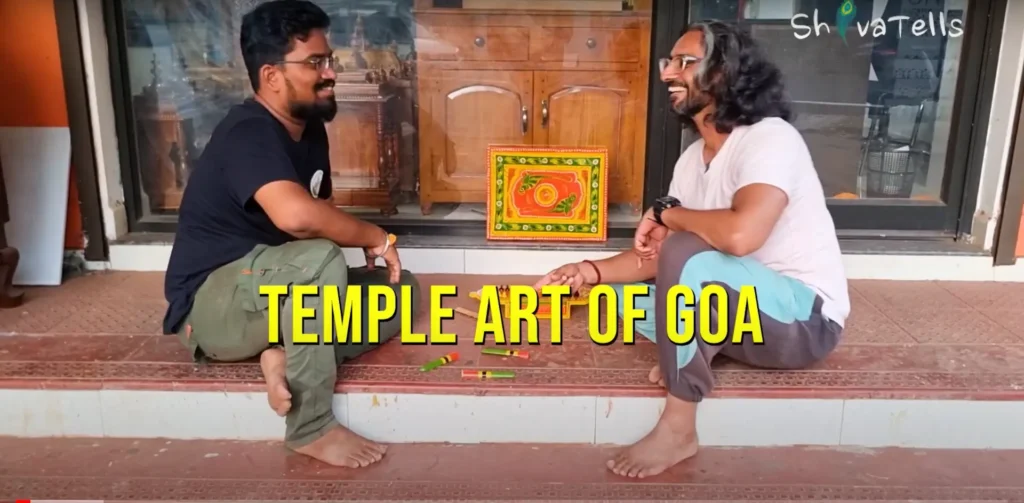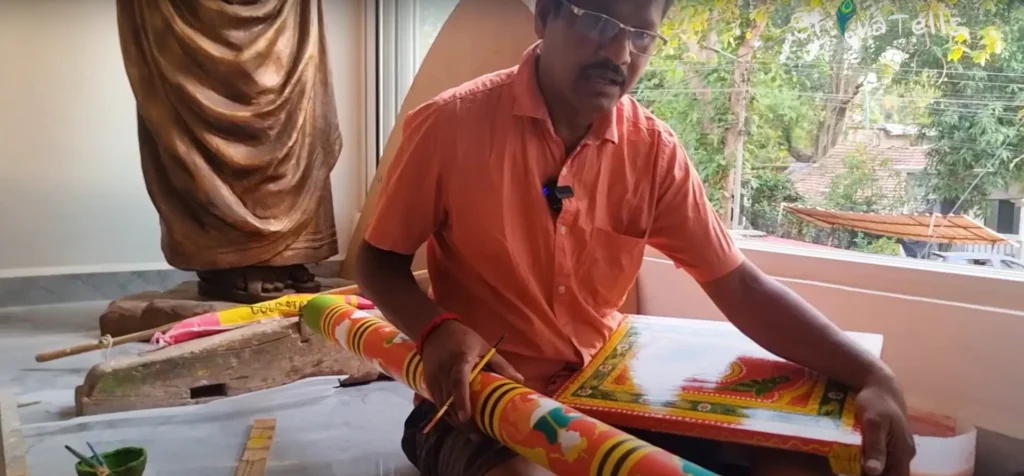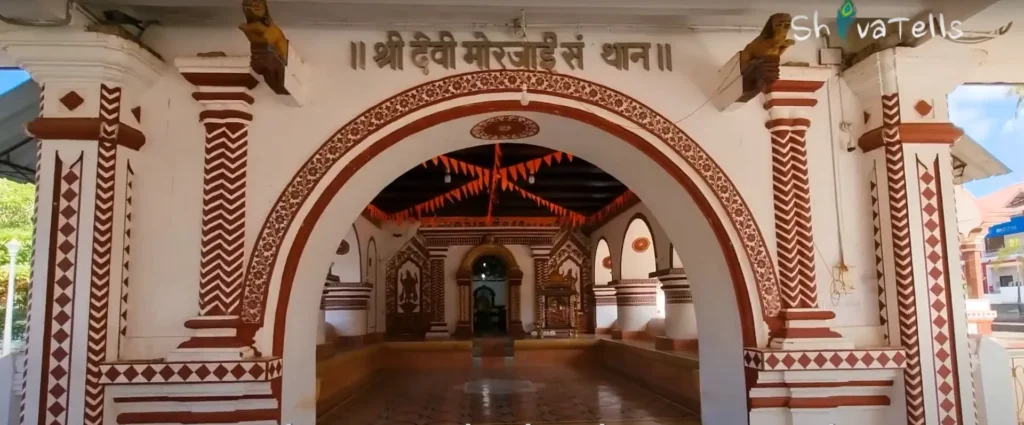Sunburnin’ hello, travelers and art lovers! This is Shiva, travel storyteller, ready to swap the beach umbrellas for a sec and show you somethin’ special. Forget the Kingfisher for a bit, ’cause we’re headin’ deep into Goa’s soul – its temples. These ain’t just places of worship, they’re canvases that have seen centuries roll by. We’re talkin’ Kaavi art and Chitari art, bursting with stories, colours brighter than a Goan sunset, and a heritage thicker than a Xacuti sauce! So buckle up, let’s go discover somethin’ truly special!
Table of Contents
A Glimpse into the Past

Imagine, a traditional Goan board game spread before you. The intricate designs on it? That’s Chitari art—a vivid, ancient temple art that is slowly fading into obscurity. This beautiful craft has its roots in the serene village of Kunkoli in Goa, where it was once a staple in homes, temples, and festive celebrations.
Chitari art, derived from the Sanskrit word meaning ‘picture,’ was a vibrant part of Goan culture. In the old days, you’d find it adorning cradles, wooden fruit baskets, and toys. These items, infused with rich, natural colors, were a testament to the artistry and dedication of the Chitari craftsmen. However, with the advent of plastic and mass-produced toys, the demand for these exquisite items dwindled.
An Encounter with a Chitari Artist

On my quest to delve deeper into this forgotten art, I had the fortune of meeting a Chitari artist, one of the last surviving members of this artistic lineage in Kunkoli. He shared tales of the past, of how the Portuguese influence reshaped the art form, and how modernity has pushed it to the brink of extinction. His words were filled with both pride and sorrow, reflecting the bittersweet reality of preserving such a precious heritage.
The Journey to Kaavi Art

From Chitari art, our journey naturally leads us to Kaavi art, another mesmerizing form that has stood the test of time. To witness this art in all its glory, I traveled to the Lord Parshuram Temple in Pangani village, nestled in the Kankula Taluka. This temple, overshadowed by the more popular Palolin Beach, holds a treasure that few are aware of.
Kaavi art is a visual delight, created by adding a distinctive red pigment over a limestone layer. The designs, often inspired by nature or Hindu scriptures, are carved out using stencils. As I stood in the temple, gazing at the intricate floral patterns and mythological scenes, I felt transported to a bygone era where art and devotion intertwined seamlessly.
The Splendor of Morjai Devi Temple
Our next stop is the Morjai Devi Temple in Morjim, a beach destination that offers more than just sun and sand. The temple is adorned with Kaavi designs that cover the ceiling and walls, creating a tapestry of stories and symbols. Each design, whether a floral motif or a scene from the Mahabharata or Ramayana, is a testament to the skill and devotion of the artists.
Imagine standing in the heart of this temple, with the clear blue Goan sky above, surrounded by the rich hues of Kaavi art. It’s an experience that stirs the soul and ignites a deep appreciation for the cultural heritage of Goa.
The Sutradhars: Guardians of Stories
In the days of old, temples like these had Sutradhars—storytellers who narrated the tales depicted on the walls. These storytellers were the lifeblood of the temples, bringing the art to life with their vivid narratives. Today, though the Sutradhars are long gone, their legacy lives on in the intricate designs that adorn the temple walls.
Sadly, many of the temples that once showcased Kaavi art were destroyed during the Portuguese invasion or fell into disrepair due to a lack of funds. However, the spirit of this art form still lingers in some Goan churches, albeit in a different avatar. The Portuguese introduced Graffito art, a technique where the design is carved out of a uniformly applied layer, creating a reverse effect of Kaavi art.
Preserving a Dying Legacy
Despite the challenges, Kaavi art continues to survive in pockets across Goa, Maharashtra, and Karnataka. While many modern renditions use oil paints instead of the traditional process, the essence of Kaavi art remains intact. It’s heartening to see that, even in the face of adversity, this beautiful art form endures.
So, the next time you find yourself basking on a Goan beach, take a detour to explore these hidden temples. You’ll discover a world where history, culture, and art come together to tell stories that are as timeless as they are beautiful.
Until Our Next Adventure
That’s all for today’s story! Goa’s temple art is a hidden gem, waiting to be discovered by those who seek more than just the typical tourist spots. Next time you’re in Goa, venture beyond the beaches and delve into the rich tapestry of its cultural heritage. Trust me, you won’t regret it.
Until our next adventure, stay curious and keep exploring. Khushiyan always!
